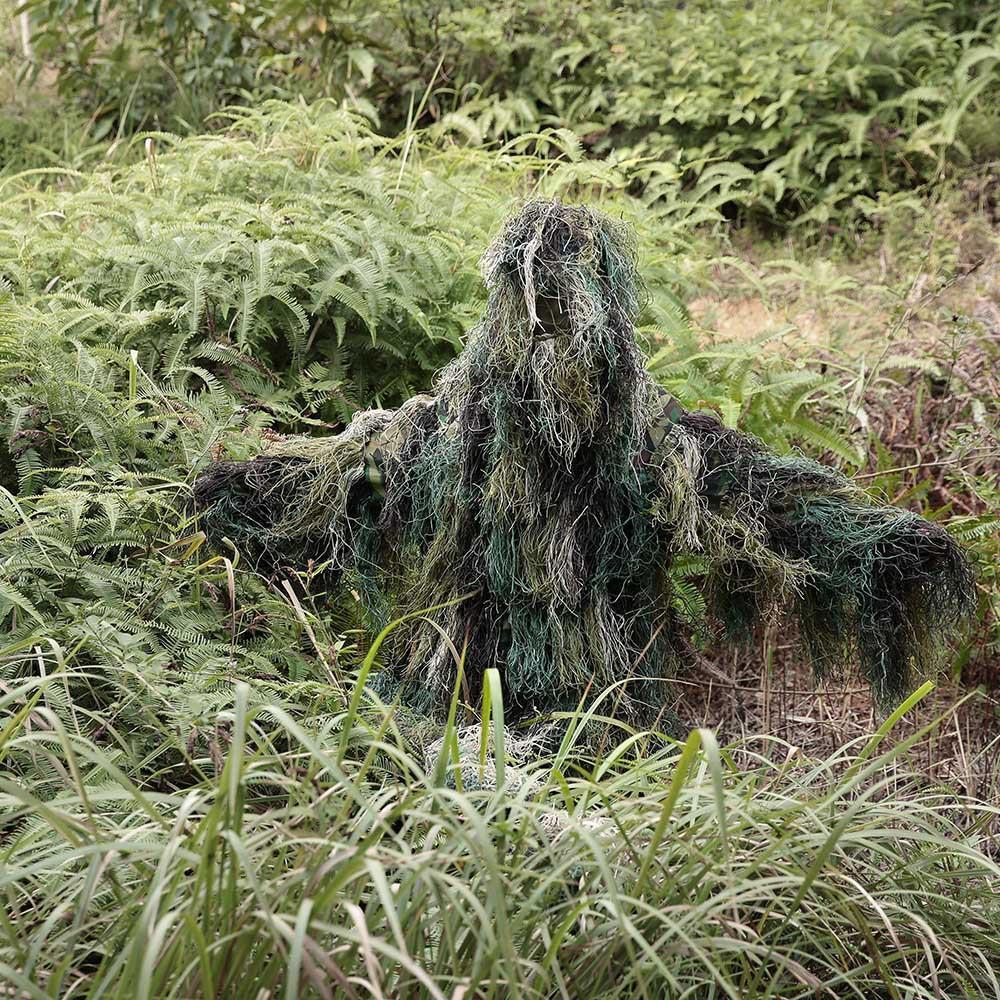Camouflage was first understood by hunters who recognised that their prey had a form of protection that was not just their teeth or claws; that their skin and fur was coloured to blend in with the surrounding landscapes. Hunters then adopted this, wearing fur, skins and feathers to get close to their prey. Hunters still use this technique only it has evolved into complex clothing like Ghillie Suits - invented by Scottish gamekeepers - which consist of hundred of pieces of hessian attached to netting. Different cultures and environments have different forms of camouflage depending on the surroundings - in the tropics contrasting camouflage is most effective in the bright vibrant colours as it competes with the visual landscape. Whereas in the desert more muddy colours are worn. Camouflage of this nature is also known as 'disruptive pattern'. Wearing the furs of an animal was not only a way to trick the animal into getting close to the hunter, but also links with the shamanistic idea of being able to connect with the spirit of the animal you are hunting.
Camouflage has since been adopted by the military as a primary form of concealing vehicles and weaponry, but disruptive pattern camouflage didn't become militarised until WWI. The first camouflage replaced a single colour similar to that of the landscape with similar overlapping shades that confused the eye and make soldiers difficult to spot. Militarised camouflage intially was designed by artists, and the different styles of camoflage drew upon the artistic ideas of the time as well as the ideas of naturalist Abbot H. Thayer, but it was Lucien-Victor Guirand de Scévola who believed that 'in order to deform totally the aspect of the object, I had to employ the means that cubists use to represent it' - which mean to split up the aspects of the colour into different shapes and colour.
During WWI dazzle ships were created. Dazzle ships had disorientating black and white geometric shapes painted shapes all over them, which confused enemy ships as it made it difficult to estimate speed, direction and range. This dazzle camouflage was employed by the British marine and over 2000 ships were painted during WWI and into WW2. Each design was different, and alot of the designed were designed by women from the Royal Acedemy of Arts.


sabina keric and yvonne bayer
desiree palmen
annie collinge
https://www.tate.org.uk/context-comment/articles/art-culture-and-camouflage

No comments:
Post a Comment